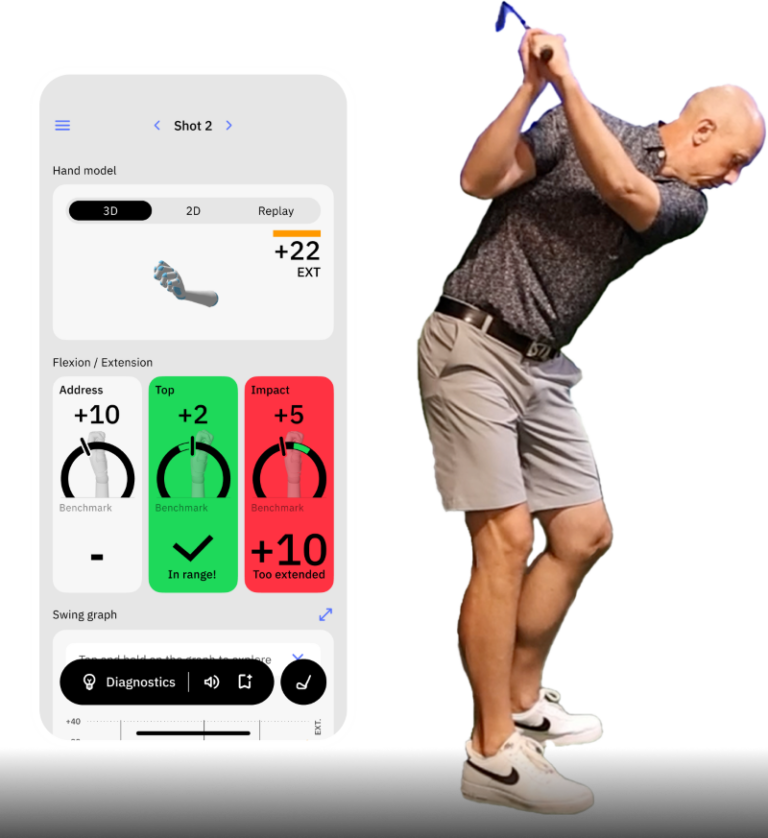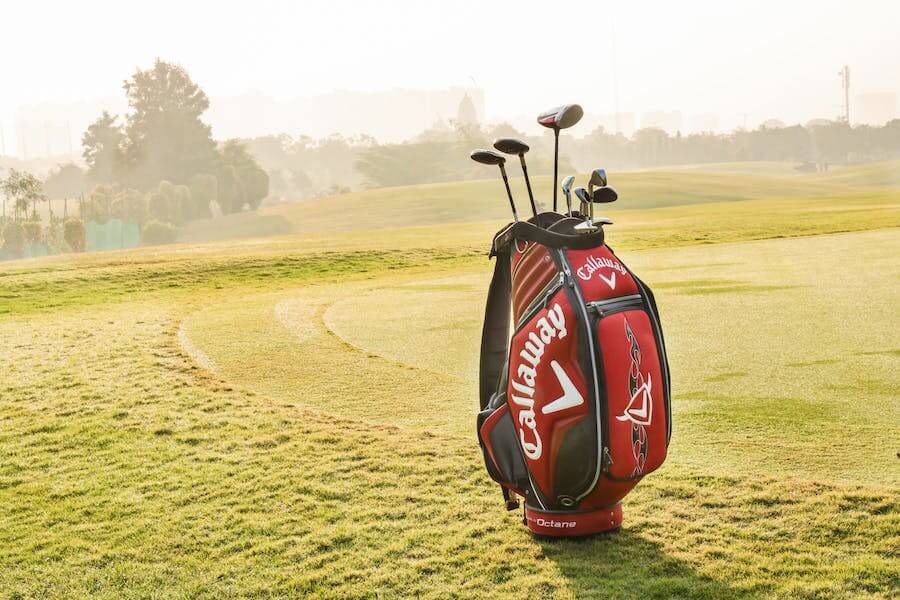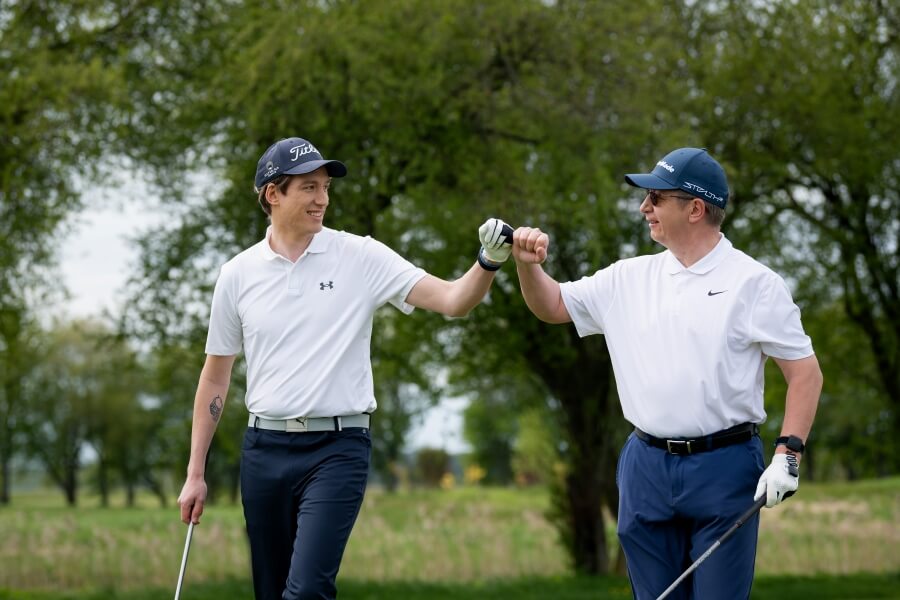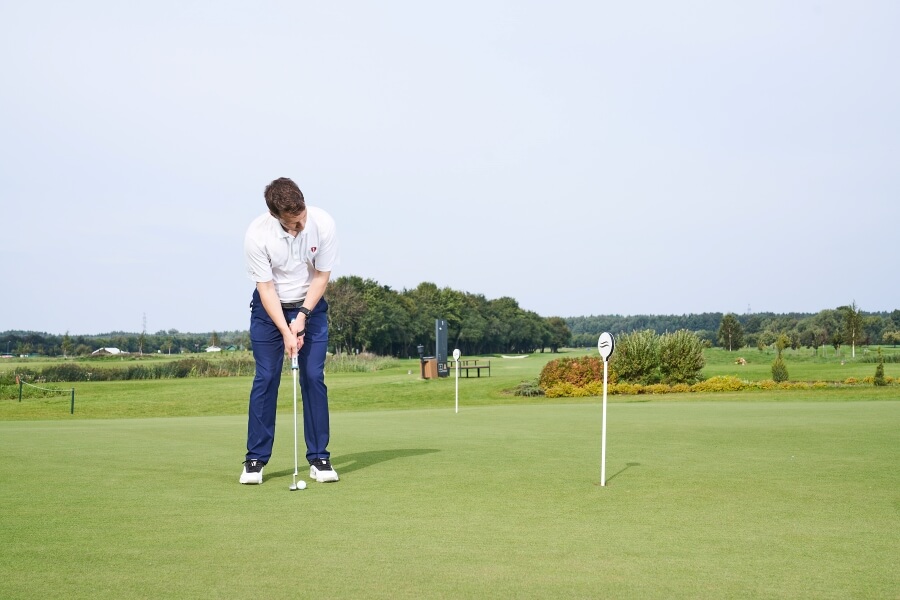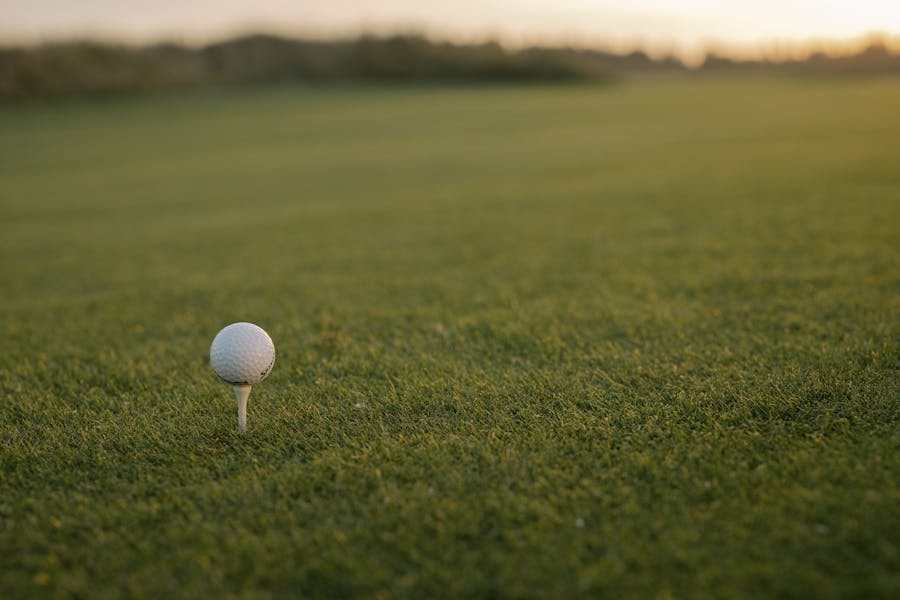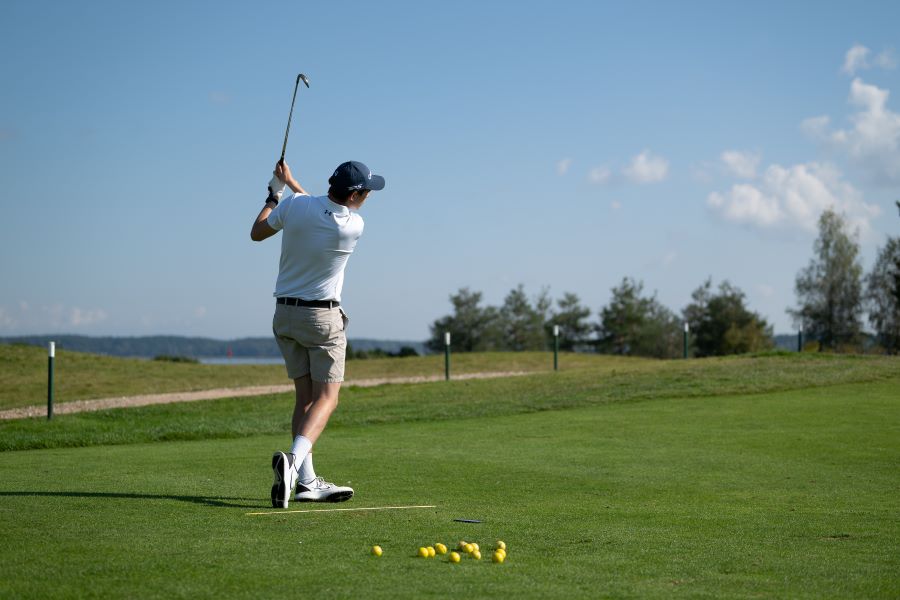Strategic Aiming Tips and Strategy to Improve Course Management and Lower Scores
Golf course management is all about how you play the course. It’s not the shots you hit but instead the strategy you take to tackle the golf course.
For many players, the concept of the proper strategy means aiming at the target each time.
Luckily, with data and insight from some of the best players in the game, we know what it takes to improve golf course management based on where you aim your shots.
Key Takeaways
If you don’t have time to read this article on aiming to improve your course management, here are a few of the most important concepts to walk away with.
- Golf is unpredictable, and even a great shot may not always end up directly on target.
- Think of your golf shots more as a cone: the longer the club you have in your hand, the greater the chance you are going to miss it, and the greater the dispersion.
- Adjust the center of the cone of misses to be in an area where you won’t get yourself in trouble. If an 8 iron could miss ten yards left or right, aim where you’ll still be on the green even if you miss it.
- Remember what golfer Ben Hogan said: “Golf is a game of misses. Those with the best misses will have the best round.” Think of this the next time you play a risky shot on the course.
Contents
5 Best Course Management and Aiming Tips
No matter your skill level, you can squeeze more out of your game by implementing these tips on all shots.
Once you’re familiar with these, use the strategy below to develop a game plan for each time you play, depending on the course, course conditions, weather, etc.
To get personalized guidance on aiming and dispersion patterns, connect with a local golf coach who can help you map smarter targets on every hole.
Plan Your Misses
Always consider where your worst shot will be. Of course, you don’t want to visualize this shot or focus on it; simply be aware of how far left or right of a target you would be likely to miss your shot based on your natural tendencies.
Plan your center line in a spot that accommodates both the left and right misses and leaves you away from the hazards.
It’s best to choose your shot based on the 100/50 rule. Pick a shot you’re 100% sure you can hit 50% of the time.
For example, if you’re faced with a 210-yard shot over water to try and hit a par 5 in two, you would probably only make that shot 5-15% of the time, so it’s not the right call. But if you’re faced with a 160-yard shot over water and you feel like you could make that 60-80% of the time, then go for it.
As long as you’re 100% sure you could make that shot at least 50% of the time, then it’s the correct call.
Avoid Emotional Decisions
Stick to your plan when you are on the golf course. Try the ice cream cone method mentioned below and stick to it for at least a few rounds.
When you come across a pin you want to attack, it becomes difficult to back down, but try to stick to the plan.
Remember that the randomness of golf will also help you get a few shots that go your way unexpectedly.
Golf is a marathon, not a sprint, so don’t succumb to micro issues; maintain a macro perspective.
Work on Clubface Control
In addition to making good decisions, you must also have control of your clubface so your body can control the ball flight.
The wrists in the golf swing are what control the face and thus the starting line of all shots.
Work with HackMotion to check the amount of extension and flexion you have through impact.
Narrowing down the position of your wrists so that they are more consistent will significantly lower your dispersion rates.
This doesn’t mean start dissecting your entire swing while you’re in the middle of the round.
However, since the wrists play a crucial role in direction, it can be a good strategy to incorporate them into your pre-shot routine to ensure they always contribute effectively.
Start Recording More Data
Start recording data about your golf game and how far you hit your shots from the target line. You’ll be able to pick a smarter aiming point and get the ball in the fairway or on the green.
Also, record your HackMotion sessions so you know how much progress you are making in squaring the clubface more consistently.
After a few rounds, you will see patterns that you can address during your practice session and start narrowing your margins.
Practice these Concepts on the Driving Range
Consistent practice with this pattern and concept in mind will help you become a more strategic golfer. You’ll make informed decisions, hit cleaner shots, and get the ball in the hole faster.
If you have some time at the driving range, consider using our driving range practice plan to ensure that your time is used wisely.
Professional Course Management Strategy
If you want to improve your course management, the ice cream cone of misses strategy can help.
Ben Hogan played his game this way without calling it this, and then mathematician and professional golfer Scott Fawcett developed it further.
Visualization and Analysis
The first step in this process is to examine your game thoroughly.
Let’s say you were going to hit 100 shots with your 7-iron. How many of them would go straight at the target, how many would go left, and how many would go right?
Now, take this a step further and consider how far left and how far right these shots might go.
For great players, the misses are not nearly as wide as they are for higher handicap players.
Think of your golf ball as the tip of the ice cream cone. When you hit your shot, the width of the top of the ice cream cone is where it could end up.
The range of misses for your driver, will be much wider than that of the wedge or short iron.
Aim Away From the Trouble
Always aim away from the trouble. Even the professionals do this. If there is water down the right-hand side of the fairway, you won’t always be able to aim in the middle of the fairway.
Instead, you must think about your cone and where the miss on the right could end up. Take a line far enough left that even your right miss won’t end up in the water. For most golfers, this may be the left center of the fairway.
Of course, if you miss this a little left, you’ll be in the left rough, but you won’t be in the water.
Go For the Middle of the Green
You will want to aim most of your golf shots in the middle of the green. When you aim for the middle, you still have a chance of hitting the ball on the green, even if you hit it a little left or right of your target.
When you go for the pin, there is no telling what may happen if you miss the shot.
Aiming for the middle of the green reduces the chances of ending up in the hazards and gives you more realistic chances of a birdie putt. Most professional golfers will often tell you that they go for the middle of the green.
Sometimes they miss it a little, and the shot ends up right next to the pin. This is exactly what Hogan was talking about when he said that golf was a game of misses.
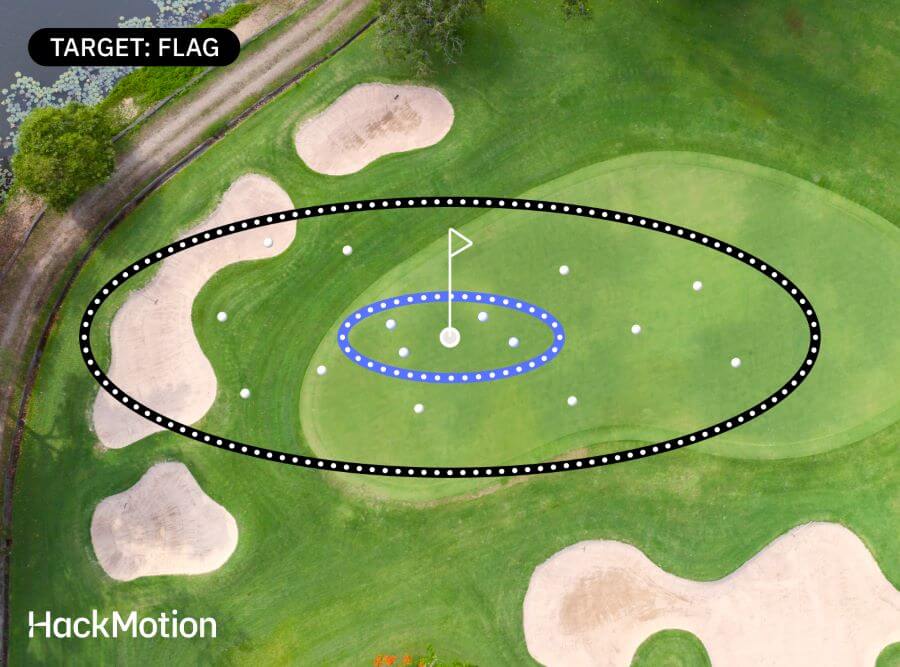

Choose the Right Club
With all the research on the good and bad shots amateur golfers hit, we know there is also an issue with the depth of misses players experience.
When dealing with a pin in the front of the green, use a longer club and a shorter swing. You’ll be making sure that you get the club on the green. For pins in the back of the green, use shorter clubs and take a longer and more controlled swing.
Even if you come up just a bit short, you’ll have a putt at birdie. If you take too much club and end up behind the pin, it’s not a good spot.
Final Thoughts
These aiming concepts for better course management aren’t new, yet millions of golfers still fail to implement them in their game.
If you start to manage your misses and use strategic planning, it will lower your scores. Using Hackmotion will make this process quick and enjoyable. The personalized drill suggestions and data collection are so advanced that it’s like having a world-class golf coach personally overseeing all your play and practice time.
Mechanics are important, but don’t underestimate the power of good planning, fundamental aiming, and the cutting-edge technology that Hackmotion provides.
